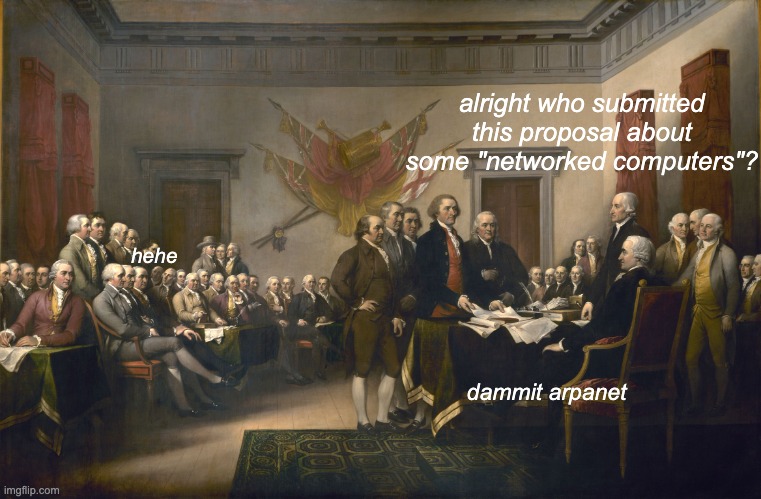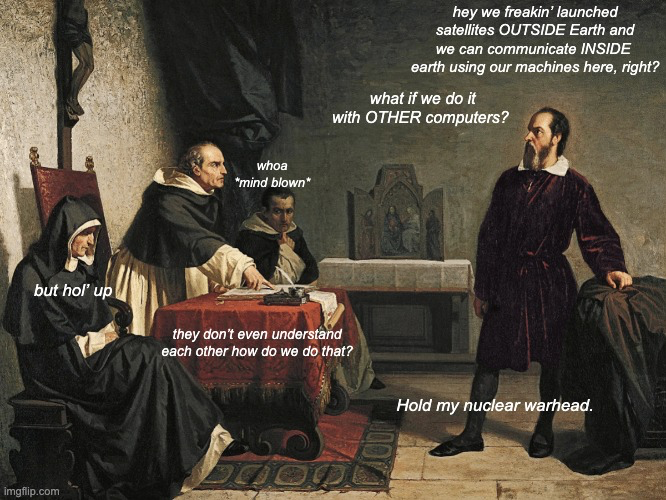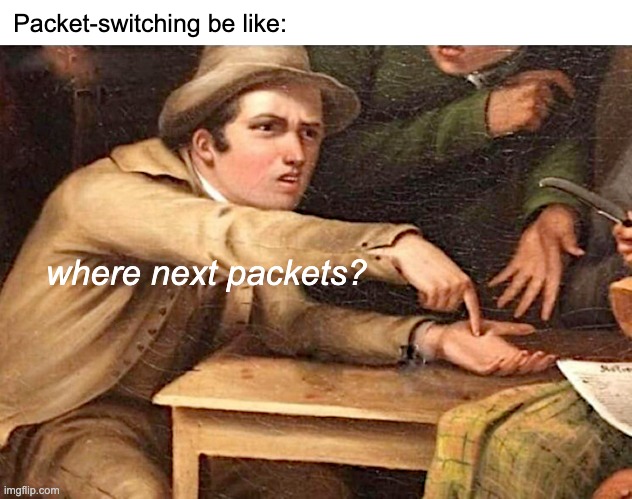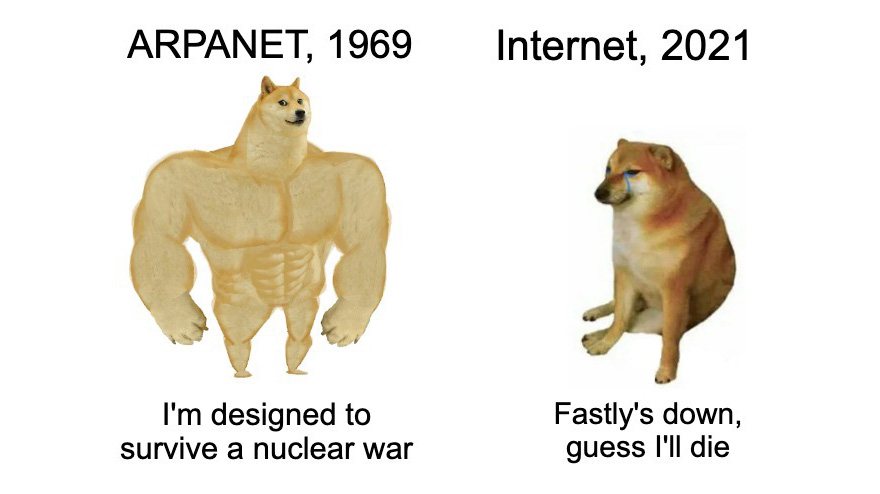Cybersecurity - The Bigger Picture (3/n)
(I guess)
All is interconnected.
You good?
It’s okay. Take a rest. You are absorbing the entirety of more than 2 millennia worth of information at once.
Warning: a tad dramatic paragraph. Skip if you don’t like corny things.
If it might help, image you are time traveling and discovering how did Cyber Security investigation and analysis changed and improved over the course of time. You move from each age understanding the gist on how they applied cyber security concepts during their time. As you’ve finished the Part 2, you are now as great as the people back in the 80s. They too started not knowing how to investigate but still they close all those investigations as they can.
taps shoulder. Good job surviving!
Think like people back then. We’re in the 80’s and we have opened a new can of worms.
The internet.
You can now access any information you wanted, but so does everybody else.
(dun dun dun dun)
Internet didn’t came out of nowhere and it evolve significantly over time. Necessity indeed is the mother of all inventions. Quicker communication mechanisms were in dire need if you’re able to get the upper hand in the Cold War. As military: you need secrecy, you need a secure way to send messages and avoid having someone listening in on your conversation, and you can access it from anytime, and anywhere. Classic CIA. Their solution? Networked computers.

Analog-type technologies were still prevalent during those times but it’s fairly easy to tap in and hi-jack the signal. Ya can’t afford that to happen, do ya? So they thought (probably),

They thought (probably) if people can communicate and understand using a same language. Then these machines can do it, too. A common way to communicate. A standard. Hence, after creating ARPA, they created ASCII (American Standard Code for Information Interchange). The first universal standard for computers. ASCII alphabet was established translating digital signals (bits) into words.
So it kinda works like this:
- If people understand alphabet (A-Z, numbers, and other symbols); and
- Machines understand 1’s and 0’s (digital signals)
- Then if we set this specific combination of 1’s and 0’s to this letter and put it in every machines;
- They’ll practically understand each other and at the same time it will also be in human-readable format.
Now. They taught computers the words, but the next question is how will talk to others? They can only rely on telephone line. Even if they can transmit data over long distance it still follows the same techniques in routing signals as with telephone calls. You gotta take note that this is 1960’s. It’s still a blessing from the Lord that they can communicate albeit having several technical constraints. Ever experienced having around 1 Mbps while streaming videos online? Well, your connection speed is still a thousand (a lot more) faster than people in the 60’s.
Bunch of studies and research were still being develop on how to transmit data efficiently. So then fellas again regrouped and discussed these issues:
Guy 1: Fellers, it’s kinda hard sending cat gifs and funny memes via phone. Any ideas?
Guy 2: Aight, aight. Listen. What if we divide these data into several forms and then send it continuously until all the data have been transferred? Egh? Egh?
Everyone: What?
Guy 2: Hold my mainframe.
Packet-switching concept was introduced. Suppose to say you only have a bicycle and you need to transfer your things to a new house, you’ve packed everything in one big box. So now you’re having trouble moving since you’ve got this one humongous box to carry but you got an idea. What if you put everything in smaller boxes enough to carry it while moving. That smaller boxes were called packets.
So you can transmit data quickly and efficiently.

But it’s still relatively difficult to communicate since they still need to teach both the communication line and the computers how to use it. So they wrote a software “to teach” these computers how to handle packets. Within this software, there are a bunch of tricks: packet handling as mentioned, error handling to detect and correct issues during data transmission, session management, the flow control, and protocol information which include packet formatting, addressing, etc. Those guys above were referred to as Network Working Group and they called this software, “Network Control Program”.

Then bunch of application were created to run over Network Control Program. I’m sure you’ve heard about TELNET, SMTP, FTP, etc. It is that old, and inherently not secured since they were developed for the sake of being functional (and there’s no WireShark nor TcpDump that time so they’re safe I guess). Network Control Program then became Transmission Control Program (TCP) and later on became Transmission Control Protocol/Internet Protocol. They’ve added bunch of stuff like User Datagram Protocol (UDP) which can be used when communicating end-to-end.
Since you know that TCP was breaking down packets into smaller pieces and sending it one by one in sequence, you can’t do that when trying to make a call or watching cute doggos. You’ll end up waiting forever if your connection is slow since after reaching out to you, the data needs to be re-structured first. This goes against the principles of data communication as you need it to be efficient. Hence, they have added UDP.

tl;dr
So basically, in order to communicate these computers needs to speak the same language and follow standard protocols to reach out one another across the globe.
Phew. This is rather lengthy post. See part 4.